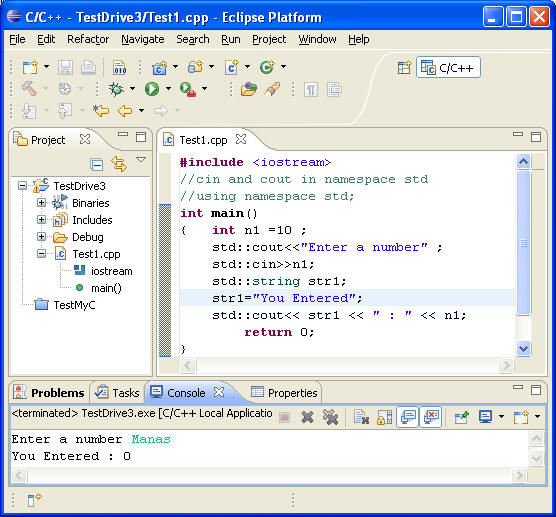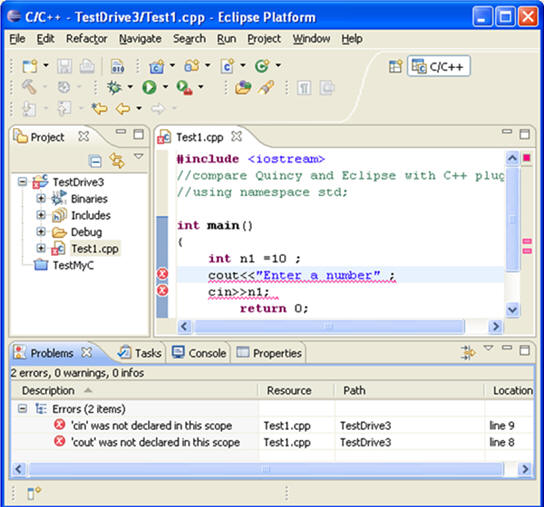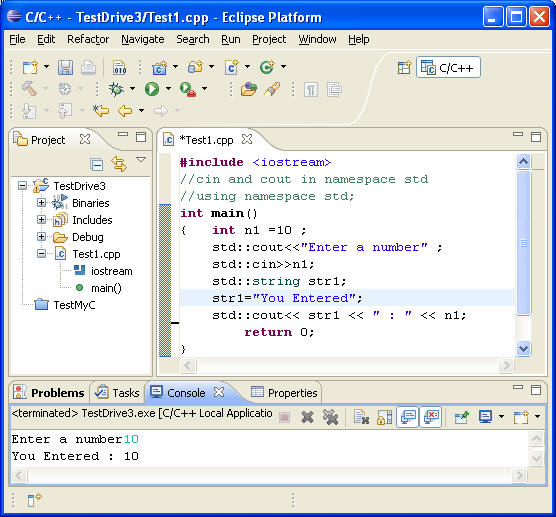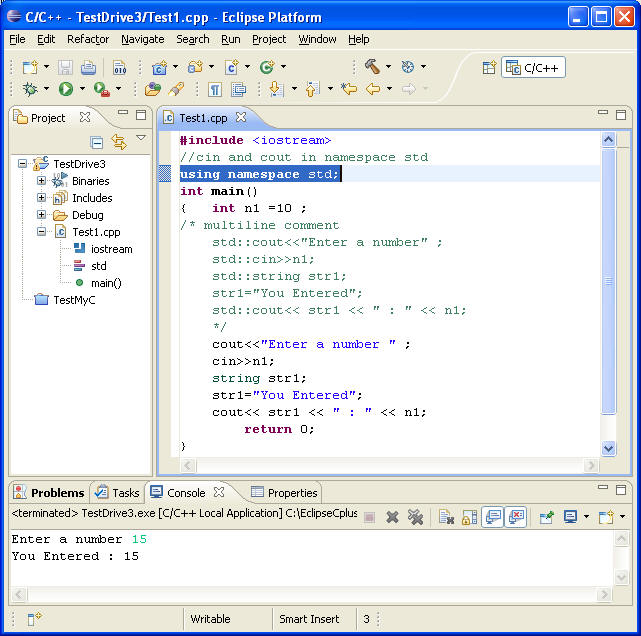Objectives : Input and Output Stream in C++
- File Name : iostream_cin_cout1.cpp
- Introducing "#include <iostream>", a preprocessor directive which support input and output operation in C++ programming
- C++ language, uses an objects like ,"cin” or "cout", are predefined stream-object, and to use these object you must include the "iostream" file . The name "cin" and "cout" are suffixed for "console input", and "console output" respectively.
- Special Notes on Namespaces.
- Operator Overloading:
- bitwise left shift (<<) operator, also known as insertion operator.
- bitwise right shift (>>) operator, also known as extraction operator.
Step 1: Create a source file, or use a template and replace the codes, whatever suits you the best. In this example I used an existing project , created with Eclipse IDE, and then edited the source code.
The header file “iostream” of C++ language defines “cout” and “cin” objects which handle input and output operations.
In the image below, I remarked the line, “//using namespace std; “and used those two objects with scope “::” operator. You won't have to
Step 2: Now edit this code, as shown below and then run. This application will process an integer input with object “cin” and C++ extraction/input operator “ >>” (data extraction steps, shift to right) , then display the data with the object “cout” and “<<” insertion/output operator (insertion operations steps, shift to left).
Step: 3 Brief Discussion: The iostream library of C++, allows streaming data input and output. The screenshot below, demonstrate that cin object with right-shift (>>) operator was expecting an integer, but encountered a non-integral data; an error expected and "0" will displayed as an output.

Special Notes : using namespace std:
When we add a reference of this namespace, " using namespace std;" we don't have to use the object-scope resolution operator .
The label "namespace" allows to group up classes, objects and functions as a single entity under a name. C++ has some fixed namespaces like std, but it also allow the user create new namespaces.
In ANSI C++ the standard library members (like cin, cout, string, etc) are enclosed within a namespace called std. When you cite a namespace before the "int main()" it becomes a global entity, and you don't have to use "::" operator. The name of the namespace must be unique. We will look at this example, scope_namespace1.htm, later in this chapter.



